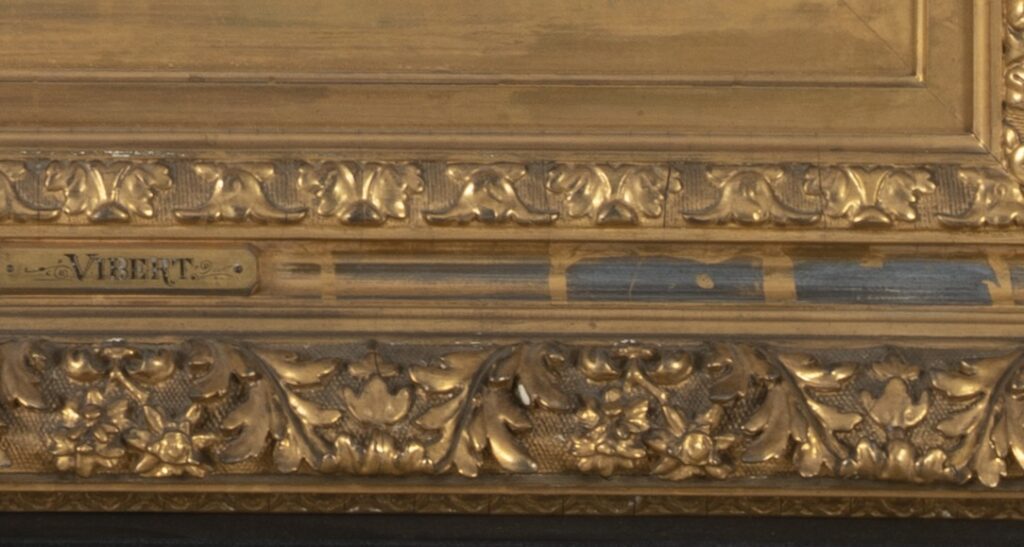 Eustis Estate
Eustis Estate
Dreams of the Past
Jehan-Georges Vibert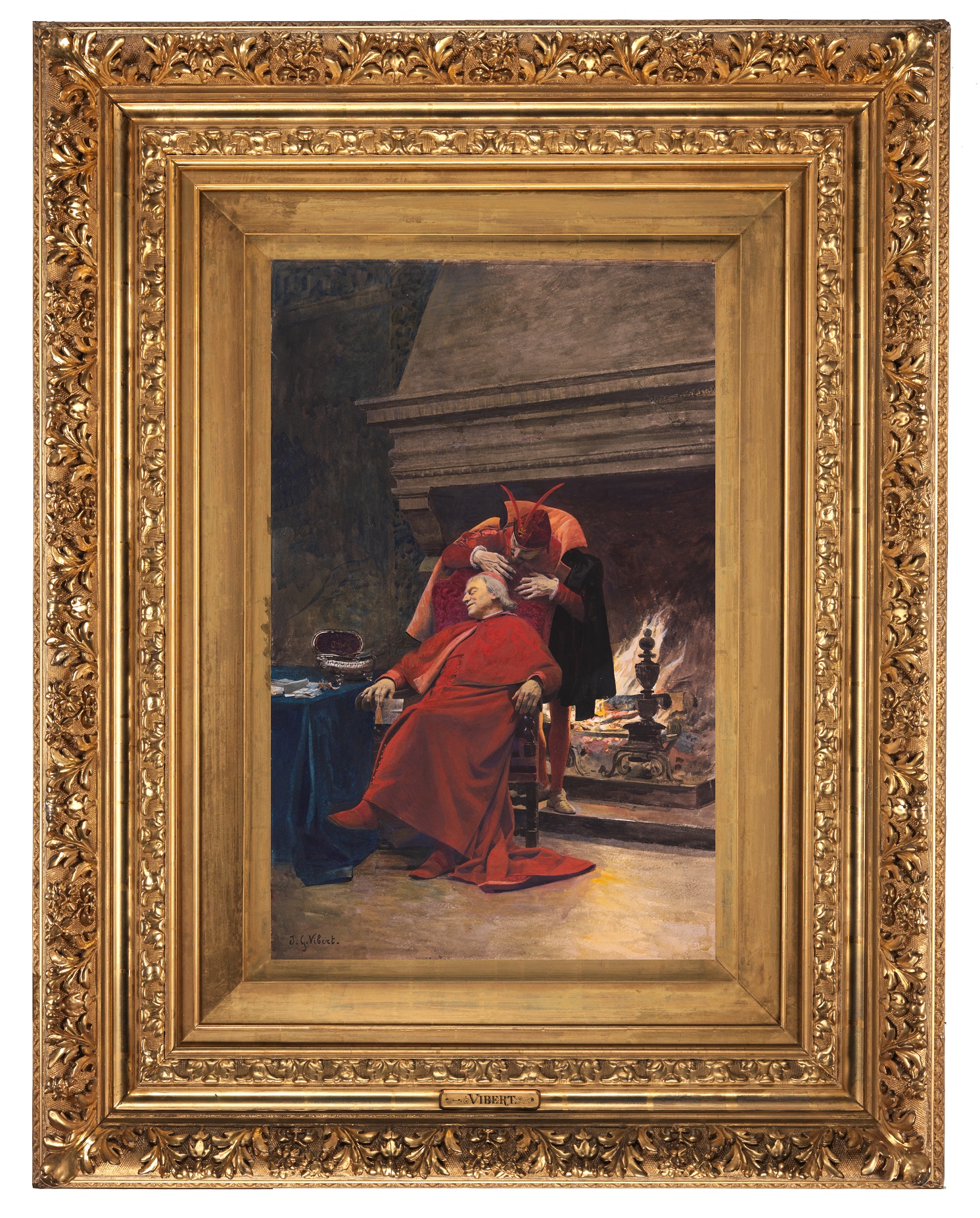
From the Conservator's Notebook
Historic New England objects conservator Michaela Neiro supervised the conservation treatment and stabilization of this exhibition’s paintings and frames over a period of two years. The Conservator’s Notebook features explanations and insights that Michaela has drawn from her project notebook, including close-up photographs showing how the work was done.
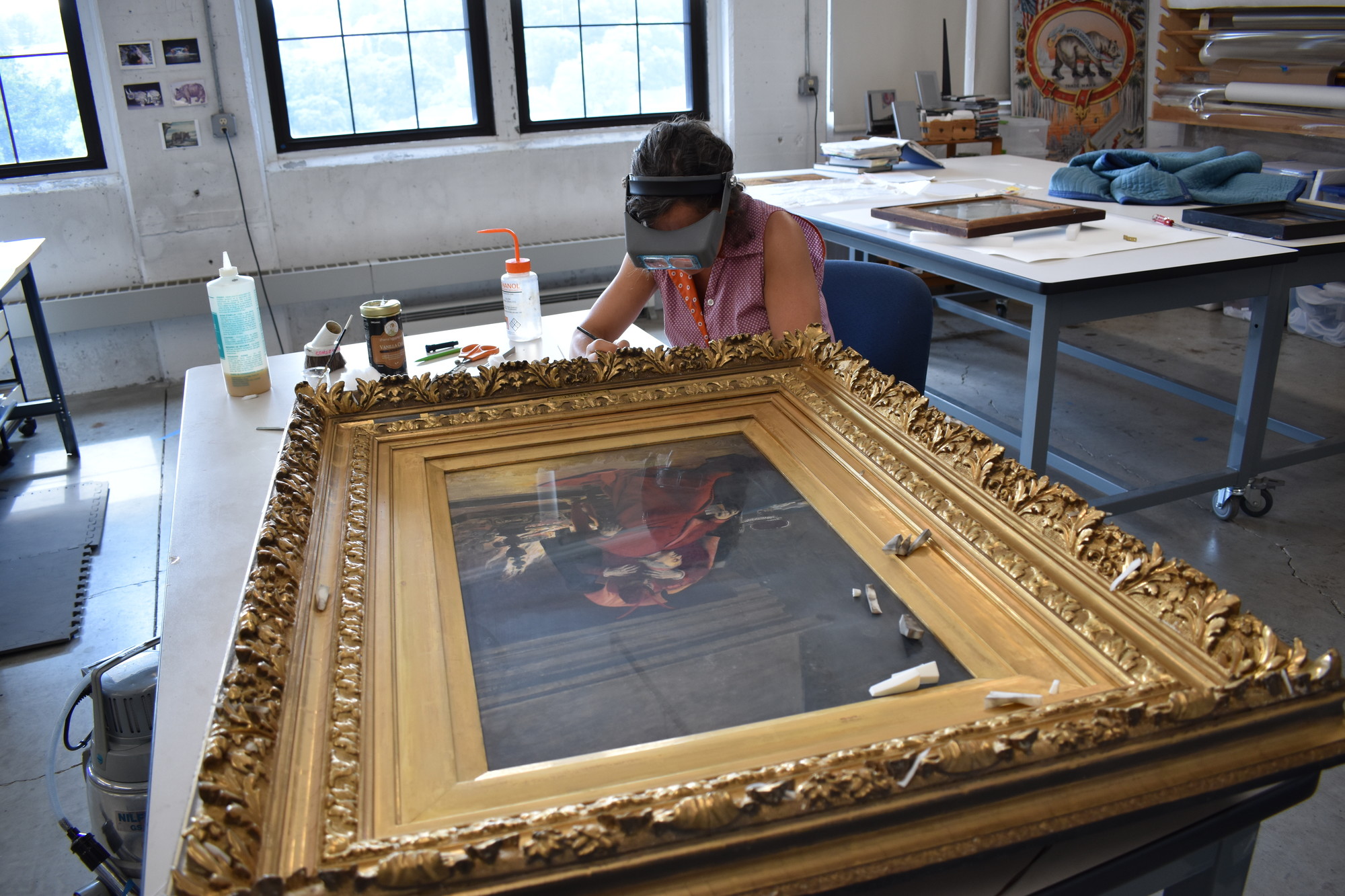 This complex frame is entirely water gilded. The process is called water gilding because water is used to reactivate the glue in the gray bole and allows the gold leaf to stick to the surface. Bole is a smooth, hard clay that allows the gold, when burnished, to become very shiny. Water gilding is more difficult than oil gilding because it requires several extra steps, so it is usually reserved for higher-quality frames such as this one.
This complex frame is entirely water gilded. The process is called water gilding because water is used to reactivate the glue in the gray bole and allows the gold leaf to stick to the surface. Bole is a smooth, hard clay that allows the gold, when burnished, to become very shiny. Water gilding is more difficult than oil gilding because it requires several extra steps, so it is usually reserved for higher-quality frames such as this one.
The gray bole is visible here along the lower edge of the frame. The gold leaf is so thin that even dusting the frame can cause it to wear away. The thick, parallel lines of gold are called “laid lines.” This occurs when the edges of the square leaves of gold overlap when they are laid on the frame to create a double thickness of gold. The decorative moldings are cast plaster. High spots are burnished to reflect light differently than matte areas and are especially beautiful when viewed by candlelight.
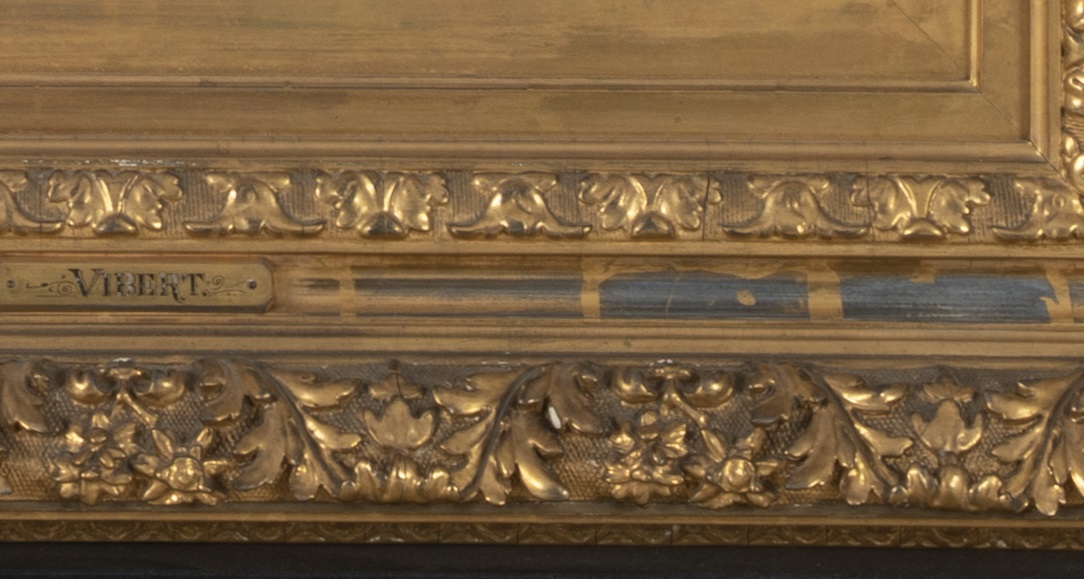
When we opened the back of the frame to replace the glass with UV filtering glass, we found a wonderful surprise…Someone wrote the title of the painting on the back! This information was previously unknown and thus an important discovery.
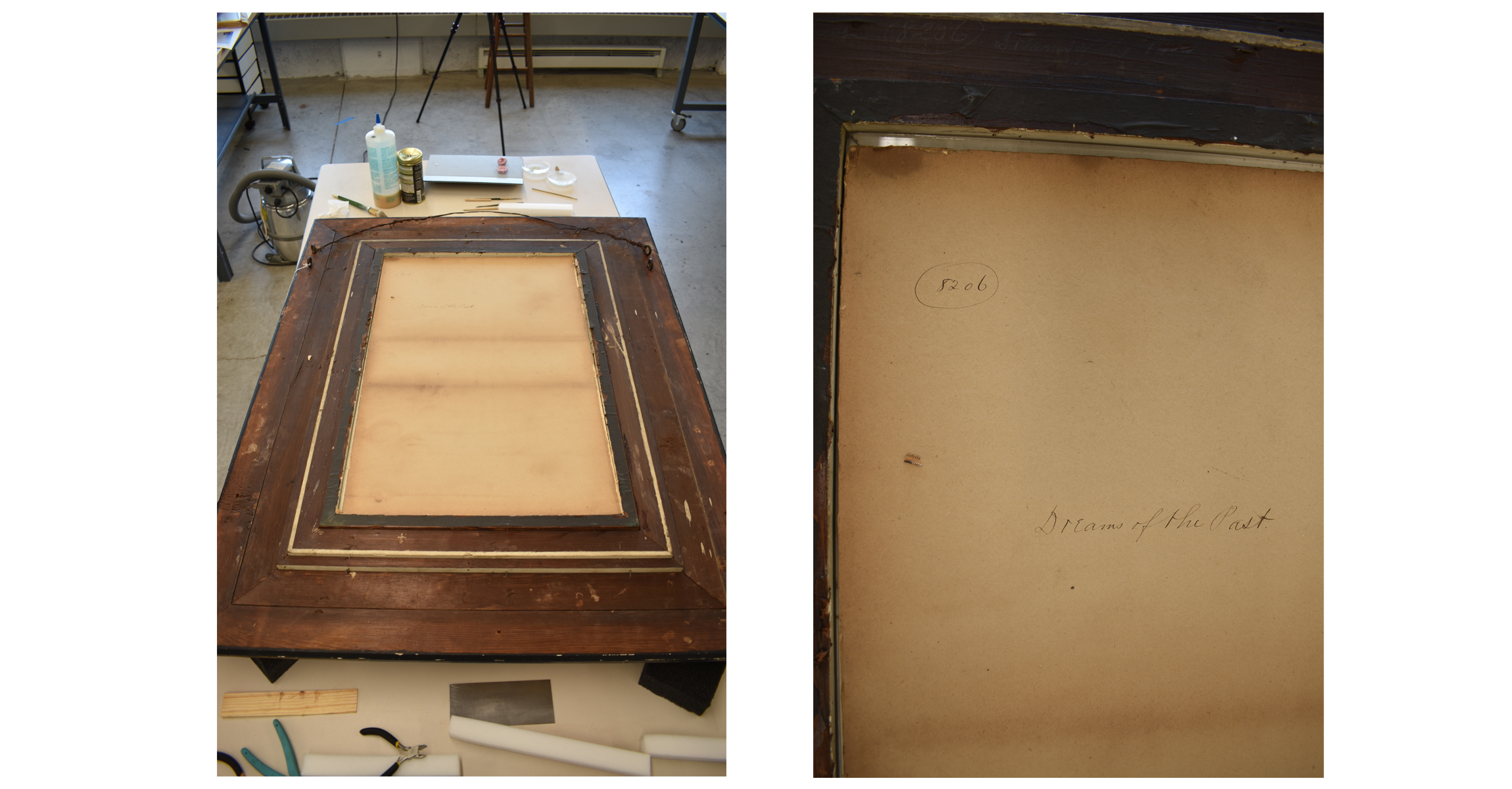
Take a closer look at the elaborate frame from Dreams of the Past.
